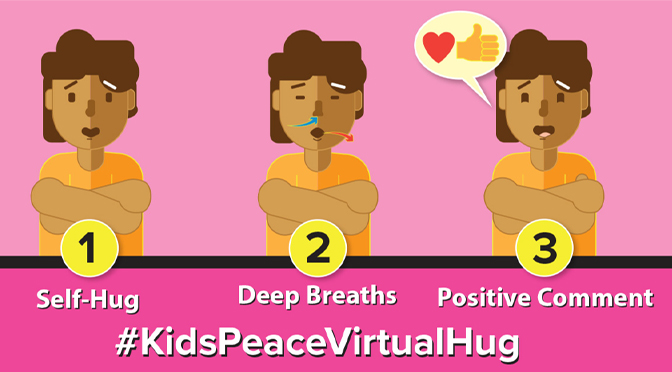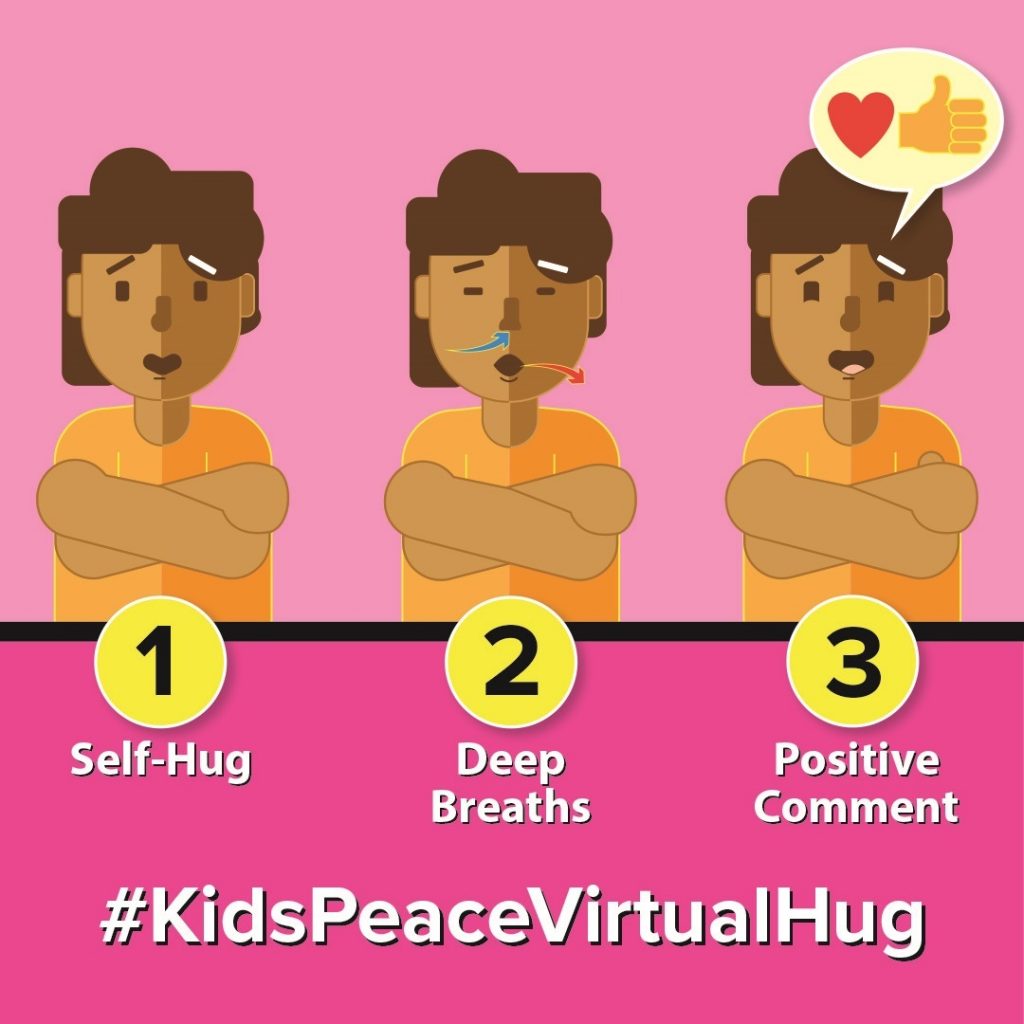|
|
“It’s not fair … just when we really could use a hug the most, we can’t get one!”
That comment from a young girl in KidsPeace’s residential treatment program resonated with KidsPeace Vice President Ann McCauley. “I realized that it’s a sentiment shared not just by the youth in our programs, but among all of us enduring social distancing and separation from loved ones right now.”
So she asked her therapeutic colleagues a question: Could KidsPeace develop a way for people to show the support and affection symbolized by the simple act of hugging, even when the recipient is separated or socially distant as a result of the coronavirus crisis?
The answer: Sure. In fact, we already did.
————————
“Hugs aren’t just nice ways to show we care. In the therapeutic environment, a hug actually has a positive effect on both the physical and mental state of the youth we seek to help,” explains Jodi Whitcomb, director of organizational development and training at KidsPeace. “Sometimes, though, the issues a particular child is facing means we can’t give them an actual hug – even when we know they need the support of one right then.”
In response, she said, KidsPeace therapists several years ago worked out a three-step action that allows both parties to experience the benefits of the action while separated:
- Giving a “self-hug” by crossing your arms and grasping your upper arms: “This gives each person the physical sensation of hugging someone, which is shown to have a positive impact on your body chemistry.”
- Taking a deep breath, and slowly letting it out on the exhale, then repeat: “The calming effect of a hug comes mostly from a slowing of the heart rate, and the deep breath in and out achieves the same purpose.”
- Telling the individual something positive, such as something about them that you like or admire: “Obviously there’s so much negative and upsetting information surrounding us right now, so the positive statement about the other person adds a counter-balance to all that.
And, she added, KidsPeace’s “Virtual Hug” can be used by anyone who wants to show support for those they can’t be with at this anxious time of isolation.
Information Provided By:
Robert Martin
Director of Communications









